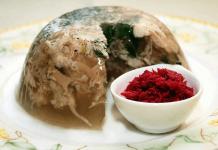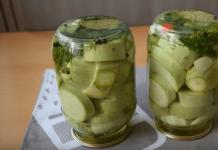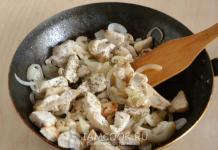The term lucid dreaming was coined by Frederic van Eijden. Lucidity usually begins in the middle of a dream, when the dreamer realizes that the experience is not taking place in physical reality, but is a dream. Often this awareness is initiated by the dreamer when he notices an impossible or unlikely event in the dream, such as flying or meeting a dead person. Sometimes awareness occurs without any specific prompt in a dream; a person may suddenly realize that he is in a dream. A minority of lucid dreams (about 10% according to research by Laberge and colleagues) are the result of the return of REM sleep (with dreams) immediately after awakening with continuous reflective awareness. The basic definition of lucid dreaming simply requires that you be aware that you are dreaming. However, the quality of mindfulness can vary greatly. At a high level of lucidity, a person is aware that everything that happens in a dream is happening in his mind, that there is no real danger, and that he is in his bed and will soon awaken. At a low level of lucidity, a person may be aware to some degree that he is dreaming, which may be enough to begin to fly or to change what he does in the dream, but not enough to understand that people in dreams are a manifestation of the dream that the sleeper cannot receive any physical harm, or that he is actually in bed.
Substances and dreams
Under the circumstances described above, it is highly recommended in the field to develop a safe way to help dreamers achieve higher states of lucidity in their dreams more frequently. Neurotransmitter modulators such as acetylcholinesterase inhibitors can be used for this purpose. Several substances have been proposed to increase the likelihood of lucid dreaming, from vitamins to prescription drugs. There are some good scientific studies to support these claims. Lucid dreams are very dependent on the placebo effect; believing that something will stimulate lucid dreaming is very effective. Many prescription drugs, as well as marijuana and alcohol, alter the sleep cycle, typically by suppressing REM sleep. This results in a phenomenon called the “REM response,” where a person experiences intense, long periods of REM after the substance has stopped working. This may manifest as nightmares or perhaps as lucid dreams since the brain is very active at this time. Drugs in the LSD family, including psilocybin and tryptamines, actually stimulate REM sleep (in doses small enough to allow sleep), leading to longer periods of REM. Due to the potentially dangerous and illegal nature of these substances, their use is discouraged.
Acetylcholine and lucid dreaming
It is known in the scientific literature that acetylcholine and its agonist, as well as acetylcholinesterase and its inhibitors/antagonists, can influence REM and the sleep process itself 14). J. A. Hobson, in his 1988 book The Dreaming Brain, says, “Cholinergic mechanisms in the brainstem induce sleep and dreaming.” It has also been found that microinjection of the acetylcholine agonist carbachol into certain brain regions, such as the pons, induces long periods of REM sleep, and that many of the neurons critical for REM sleep respond to acetylcholine. Neither Hobson nor other scientists have discussed the possibility of altering cholinergic levels using acetylcholinesterase inhibitors as a means of enhancing memory recovery and awareness. Historically, there have been many cultures in which naturally occurring substances have supposedly been discovered that somehow alter dream lucidity. One such substance, Calea casatecci or "Dream Weed," is, according to a 1986 article by Lilian Mayagoitia et al. in the Journal of Ethnopharmacology, "a plant used by the Juntal Indians of Mexico to receive divine messages in dreams." The neuroactive substances from this herb are sesquiterpene lactones and, as far as is currently known, are not associated with acetylcholinesterase inhibition or acetylcholinesterase inhibitors.
Herbs and plants
Both ancient techniques and modern popular medicine attribute "oneirogenic" or "hypnotic" properties to numerous herbs and other natural substances, including herbs such as valerian, wormwood, mullein, kava kava, kitta Krita, St. John's wort, Salvia divinorum, Scutellaria Indica, licorice root, verbena, jasmine, honeysuckle, cabbage, bee pollen, catnip, hops, skulikap, mimosa, lavender, damiana, Santania somnifera, passionflower, chamomile, cardamom, gotu kola, ginkgo biloba, ibogaine, verbena, rose, cinnamon, calendula, nutmeg, peppermint, holly, yarrow and anise. There is little scientific evidence to support these purported effects.
DMAE
Other supplements and/or medications that also claim to be associated with mindfulness include B vitamins, melatonin, DMAE, and the psychedelic dextromethorphan. Some of these substances may be addictive, poisonous and/or illegal. Lotsof, in US Patent No. 4,499,096, issued February 12, 1985, sets forth a "Rapid Method for Interrupting Drug Dependence Syndrome" using the drug Ibogaine. According to the patent, this drug induces “dream enhancement or hallucinatory effects.” This claimed "oneurogenic" effect is due to the fact that it induces dream behavior while the ego's perspective remains relatively intact. As the patent states, this is a hallucinatory effect rather than a lucid dreaming effect. However, due to these hallucinatory and other side effects, this drug is illegal in the United States and thus is not a desirable means of improving sleep quality. This drug is also not considered to be related to acetylcholinesterase inhibitors or "mental enhancement drugs." DMAE (2-dimethylaminoethanol) is a chemical that has been proposed to treat a number of conditions affecting the brain and central nervous system. It is thought to work by increasing the production of the neurotransmitter acetylcholine, although this has not been proven. DMAE is believed to improve memory and mood, and improve intellectual functioning. There are several good clinical studies to support this claim. Such substances are known as “cholinergics” because they increase acetylcholine levels. They are traditionally used to treat diseases such as Alzheimer's dementia, tardive dyskinesia and Huntington's chorea. Because DMAE is considered cholinergic, it has been proposed for the treatment of these disorders, although placebo-controlled studies have produced essentially negative results. There is ongoing debate about whether DMAE increases acetylcholine levels. However, Sergio, W. stated in the August 1988 edition of Medical Hypotheses in an article: "Use of DMAE (2-dimethylaminoethanol) to induce lucid dreams" subjectively allowed him and his wife to experience increased lucidity during sleep. It is unclear from the article to what extent its purported results result from a placebo response or any specific or cholinergic effect.
Other devices
A US patent is also well known in the art. No. 5,507,716, awarded to Laberge et al on April 16, 1996, for equipment and methods used to induce lucid dreams in sleeping persons. This patent involved a device to help people achieve lucid dreaming by detecting and monitoring eye and head movements of sleeping people, where eye movement activity in the absence of head movement is used to indicate the presence of REM sleep. By applying sensory stimuli to REM sleepers, you can make them aware that they are dreaming. Keith M. T. Hearne illustrated and described his respiratory meter in 1983 (Pat. No. 4,420,001). His device sensed changes in the temperature of a person's breathing in the airway or in the flow of air into and out of the airway. Thermistors were used in an electrical circuit to detect temperature changes in human breathing. When the rate of these temperature changes reached a high predetermined level, signals created in the electrical circuit would initiate an audible sound to help awaken the sleeping person from an unpleasant dream, awakening him or helping him enter a lucid dreaming state.
Aethylcholinesterase inhibitors
None of the above descriptions describe a method of enhancing lucid dreaming that involves administering a class of acetylcholinesterase inhibitors. The use of therapeutic agents for the treatment of Alzheimer's disease, such as donepizil (Aricept®), rivastigmine (Exelon®), galantamine (Reminyl®, Nivalin®), tacrine and huperzine, results in a low incidence of side effects such as insomnia and gastrointestinal symptoms , at the same time, these drugs significantly improve cognitive dreaming lucidity, clarity, self-reflection, memorization, control, whimsy, and visual vividness. The new patent is in the area of lucid dreaming and improving dream recall and lucidity through memory enhancement, including a class of substances that include acetylcholinesterase inhibitors (AChEls). Lucid dreaming involves dreaming in which you know you are dreaming. AChE inhibitors (AChEl) inhibit the normal metabolic inactivation of acetylcholine (ACh) by inhibiting the enzyme acetylcholinesterase (AChE), resulting in accumulation of ACh. AchEl is most often used to improve memory, especially in patients suffering from Alzheimer's disease. Ach is also well known to play an important role in REM and is therefore suggested to improve dreaming and lucidity. In a study investigating the effectiveness of donepizil (Aricept®) as a treatment for improving lucid dreaming and cognitive clarity during REM sleep in normal subjects, the following experiment was conducted with the following results: a randomized, double-blind, placebo-controlled crossover study was performed on ten normal volunteers, selected due to their good memory and interest in lucid dreaming (7 men, 3 women aged 22-55 years). Patients were required to collect dream content data and other self-report measures over three nights separated by a drug washout period of at least one week. At bedtime, they took capsules containing 0 (placebo), 5, or 10 mg of desepil, with a counterbalanced order of the three doses. After each spontaneous awakening over three nights, Ss rated dream content on a range of measures including strangeness, complexity and intensity, affect, cognitive awareness, clarity, and control. They also assessed sleep quality, insomnia, and the severity of any adverse effects. Nine out of 10 Ss (90%) reported one or more lucid dreams on the experimental night, and only one S reported a lucid dream on the placebo night. Cognitive clarity, awareness, recall, control, whimsicality, and visual vividness were significantly increased by donepizil compared to placebo. The effects were generally associated with the 10 mg dose of doepisil, producing significantly higher levels of these variables than the 5 mg dose, which in turn produced significant increases compared with placebo. The odds of lucid dreaming for these three conditions increased from 0.031 for placebo, to 0.429 for 5 mg dopilpil, and 0.754 for 10 mg pipetil. The odds ratio for the 10 mg dose compared with placebo was 24.3 (p<0,001). Донепизил также был связан со значительно повышенной частотой паралича сна и 40% -ным увеличением оценочного времени сна в ночное время (176 против 126 мин в течение ночи 9,0 ч, р <0,05). Частота нежелательных явлений, особенно легкой бессонницы и желудочно-кишечных симптомов, была низкой и, в основном, ассоциировалась с более высокой дозой (два пациента сообщили о тошноте и один – о рвоте). Таким образом, по сравнению с плацебо, дозы Donepizil 5 и 10 мг значительно улучшают самооценку когнитивной ясности, саморефлексии и осознанности во сне. Эти эффекты могут быть дополнительно усилены комбинацией ингибиторов ацетилхолинэстеразы с ацетилхолиновыми предшественниками, агонистами и / или вызывающими осознанность электронными устройствами. Помимо данных, полученных с помощью пипецила, мы имеем данные на Exelon® (ривастигмин, доза 6-12 мг) и Галантамин (Reminyl®, Nivalin® 8-16 мг). Оба препарата работают так же хорошо, как Aricept®), но имеют меньшее количество побочных эффектов. Также был протестирован гиперзин с многообещающими результатами, но до сих пор не разработали соответствие дозы с Aricept® (но 5 мг донепизила более эффективны, чем 150 мкг гиперзина).
Other substances
In addition, there are reports of successful use of nicotine patches. There is also evidence in the scientific literature showing the initiation/increase of REM sleep when taking arecoline. It should be noted that altered REM, effects that increase awareness, may be caused by a number of neurophysiological effects caused by these “nootropics”, in addition to acetylcholinesterase inhibition. These include: 1. Use of a cholinergic agonist (eg, nicotine). 2. Use of muscarinic receptor agonist: drugs that mimic the effect of ACh on muscarinic receptors: Inc: muscarinic (M1), M2 and nicotinic agonists. (such as arecoline or recoline, a muscarinic receptor agonist) 3. Using a presynaptic receptor antagonist to activate the remaining acetylcholine neurons. (That is, in rats, desensitizing oligonucleotide sequences that block muscarinic M2 (but not M4) receptors, increasing extracellular acetylcholine levels. This effect (desensitizing nucleotide sequences are complementary to the messenger RNA sequence. When desensitizing DNA or RNA is added to the cell, they bind with a specific messenger RNA molecule and inactivate it 4. Use of allosteric modulators (such as allosterically potentiating ligands) of acetylcholine and nicotinic receptors (drugs that interact with the receptor through binding sites different from those used for acetylcholine and nicotinic agonists and antagonists) Other strategies for potentiating acetylcholine function to improve lucidity, including the use of other classes of compounds that work in similar ways, should be apparent to those skilled in the art. It should be noted that altered REM effects that increase lucidity may be caused by a number of neurophysiological effects induced by these “nootropic substances”, in addition to acetylcholinesterase inhibition. They include:
Use of a cholinergic agonist (eg, nicotine).
Use of muscarinic receptor agonist: drugs that mimic the effect of ACh on muscarinic receptors: Inc: muscarinic (M1), M2 and nicotinic agonists. (such as arecoline or recoline, a muscarinic receptor agonist)
Using a presynaptic receptor antagonist to activate the remaining acetylcholine neurons. (That is, in rats, desensitizing oligonucleotide sequences that block muscarinic M2 (but not M4) receptors, increasing extracellular acetylcholine levels. This effect (desensitizing nucleotide sequences are complementary to the messenger RNA sequence. When desensitizing DNA or RNA is added to the cell, they bind with a specific messenger RNA molecule and inactivate it.
Rice. 1. Electron micrograph of delftibactin complex with gold. Delftibactin was added to the gold salt solution 10 minutes before the micrograph was taken. The micrograph shows colloidal gold particles (blue arrow) and octahedral gold particles (red arrow), formed under the influence of delftibactrin" border="0">
A group of Canadian scientists has discovered a new mechanism for bacteria to neutralize gold ions that are toxic to them. It turned out that bacteria Delftia acidovorans, living on the surface of gold nuggets, secrete a special substance that transfers gold ions from solution into particles of metallic gold. This substance, the delftibactin peptide, selectively binds to gold ions even if there are many ions of other metals in the bacteria’s habitat. Unlike their fellow habitats - bacteria Cupriavidus metallidurans, which neutralize gold ions, accumulating it inside the cell, bacteria Delftia acidovorans release delftibactin into the external environment, as a result of which gold is formed outside the cell.
Microorganisms have adapted to exist in almost any conditions found on our planet. At the same time, many of them not only “tolerate” an unfavorable environment, but “adjust” it to suit themselves. To do this, they release special substances (so-called secondary metabolites) into the external environment in order to influence it and make it more comfortable. Sometimes such substances can be useful for humans. A good example is antibiotics, which are synthesized by many microorganisms in order to get rid of competitors vying for valuable resources. Many of these natural compounds have found medical use as antibacterial agents.
When studying organisms that inhabit extreme habitats for life (extremophiles), scientists are primarily interested in the mechanisms of adaptation of these organisms to environmental conditions. For example, thanks to the discovery of thermophilic bacteria Thermus aquaticus, living in hot springs at temperatures above 55°C, biologists added to their arsenal a DNA polymerase from this organism, capable of operating at high temperatures (up to 96°C). Now this enzyme is available in any biological laboratory, since it is indispensable for PCR - a reaction that allows you to synthesize a large number of copies of a particular DNA.
Extremophiles capable of living in an environment with high concentrations of heavy metals and their salts are called metal-tolerant organisms. For bacteria inhabiting the surface of gold nuggets, a characteristic environmental condition is a high concentration of Au 3+ gold ions, which are toxic to living organisms. Therefore, each type of such bacteria has a defense mechanism against toxic gold ions present in large quantities. So, for a gram-negative bacterium Cupriavidus metallidurans, one of the two predominant types of microorganisms in biofilms on gold, the mechanism of protection was already known: these organisms absorb Au 3+ ions and neutralize them, turning them into non-toxic insoluble gold, the granules of which accumulate in the cytoplasm of the bacterium (that is, its biomineralization).
When talking about biomineralization, scientists mean the ability of living organisms to form minerals, and the word “mineral” in this context is understood quite broadly (see review: Steve Weiner, Patricia M. Dove. An Overview of Biomineralization Processes and the Problem of the Vital Effect, PDF, 1.58 MB). Biomineralization includes the biogenic formation of nuggets, metal ores, etc. In recent years, many interesting studies have appeared in this area, which is partly due to the development of microscopic methods. Scientists saw that many ores contain the remains of bacterial cells (see: Wang et al., 2011. Molecular biomineralization: toward an understanding of the biogenic origin of polymetallic nodules, seamount crusts, and hydrothermal vents), which may indicate biogenic the origin of these ores (deposits of nickel, copper, etc.) (see also the news Zinc deposits arose thanks to bacteria, “Elements”, 06/19/07). And growing bacterial films were found on the surface of many ores and nuggets.

Another species that lives on gold is a gram-negative bacterium Delftia acidovorans, - has until now been practically unexplored and the mechanism of its protection from excess gold ions was not known even in general terms. Canadian scientists from the University of Western Ontario and McMaster University began studying this mysterious microorganism.
First of all, it was necessary to find out where the reduction of gold ions occurs: outside or inside the cells. To do this, the bacteria under study were grown on a nutrient medium and then filled with a solution of Au 3+ gold salts. A dark precipitate of insoluble gold formed around the bacteria, which indicated that these microorganisms reduce gold ions outside of themselves (Fig. 2). When the same experiment was done with Cupriavidus metallidurans, no insoluble gold was formed around the bacteria, since these microorganisms restore gold inside their cells.
Since it turned out that Delftia acidovorans restores gold outside its cells, the researchers suggested that for these purposes the bacterium releases some special substance into the external environment. It was necessary to identify genes Delftia acidovorans, responsible for the synthesis of this substance. An important clue was that Cupriavidus metallidurans, which restores gold inside its cells and therefore does not secrete special substances outside for this purpose, such genes should not have existed.
As a rule, to “adjust” environmental conditions, bacteria use low-molecular substances of a special structure - either polyketides or non-ribosomal peptides. Polekides are complex organic substances that are synthesized by special enzymes from small molecules of organic acids. Non-ribosomal peptides, unlike ordinary peptides, are synthesized, as the name implies, not by ribosomes, but by special enzymes, each of which can synthesize only one type of peptide.
Assuming that the gold-reducing compound has Delftia acidovorans belongs to one of these types of chemicals, researchers began searching for genes that encode enzymes for their synthesis. Using computer genome analysis Delftia acidovorans scientists were able to identify a cluster of genes that could encode enzymes for the synthesis of polyketides or enzymes for the synthesis of non-ribosomal peptides. To determine whether these genes were actually involved in gold reduction, the researchers turned them off by inserting small pieces of DNA into the gene sequence.
It was discovered that after “turning off” one of the genes encoding non-ribosomal peptide synthetase, this gene was named delG- bacteria stop forming a sediment of insoluble gold around themselves, even if there are a lot of gold ions around them. This means that it was this peptide, which was usually formed during the normal operation of the gene encoding peptide synthetase, that restored gold around the bacteria. Thus, researchers discovered a gene that protects bacteria Delftia acidovorans from excess gold ions. During normal operation of this gene, non-ribosomal peptide synthesis is formed - an enzyme that synthesizes a peptide released from the bacterium and converts the gold around it into an insoluble, harmless form.

Comparing the content of extracts from bacteria with a “switched off” and “switched on” gene delG, the researchers identified a peptide that is absent in the former and present in significant concentrations in the latter. After isolating and purifying this peptide, its structure was determined by mass spectrometry and NMR. The peptide was named delftibactin (Fig. 3).
To confirm the protective function of the found peptide, the researchers grew bacteria with “turned off” genes delG, added a solution of gold salts, as well as delftibactin. When there was an excess of gold salts in the medium, bacterial growth was suppressed, but some time after the addition of delftibactin, normal bacterial growth was restored, indicating that the toxic effects of gold ions were eliminated.

The authors studied the properties of this interesting peptide. It turned out that it is capable of working in the presence of salts of metals other than gold (Fig. 4). Delftibactin works successfully at high concentrations of iron ions, and under such conditions it primarily reduces gold. Specificity is achieved due to the fact that delftibactin forms complexes with metal ions, and it is precisely the size of the gold ion that it “suits” best.

Using NMR analysis, the structure of delftibactin complexes with metal ions was established (the role of metal ions was played by gallium ions; gold could not be used, since delftibactin quickly coprecipitates with it, and a lot of insoluble material is formed, which would significantly complicate NMR analysis). Complexes of delftibactin with gallium (Fig. 6) precipitated gold an order of magnitude worse than pure delftibactin (Fig. 5), supporting the hypothesis that gallium binds to the same delftibactin groups that gold would bind to, and that the structure of the complexes delftibactin is similar to these two metals. When a complex is formed with a metal ion, the delftibactin molecule bends and binds to the ion using several side groups at once. Once the ion has bound to the delftibactin molecule, its reduction can occur. It remained to find out by what mechanism this occurs.

When studying different variants of delftibactin from different strains Delftia acidovorans The researchers discovered a variant that differed from the main one by the presence of an additional methyl group at one of the metal binding sites (this variant was called delftibactin B). This variant differed from the most common delftibactin A in its reduced reactivity. This finding revealed which part of the delftibactin molecule reduces gold. The authors hypothesized that reduction occurs through oxidative decarboxylation, which explains why a molecule with a more reactive formamide group is better at reducing gold than a molecule with an acetamide group (Figure 7).

The authors of this study have come a long way from complete ignorance of how Delftia acidovorans is protected from excess gold ions in the environment until the compound that precipitates gold is discovered and the mechanism of action of this compound is elucidated. Delftibactin is the first secreted metabolite discovered that protects bacteria from soluble gold and promotes its biomineralization (Fig. 1). The authors note that the found compound precipitates gold from a solution of its salts much faster and more efficiently than previously known compounds with similar properties (for example, citrate), and they hope that their discovery will find practical applications.
And muscle activity
T
The level of skill of athletes involved in various sports increases from year to year. Sports records are improving, and the boundaries separating success from failure are shrinking. Therefore, coaches and athletes look for the slightest opportunities to achieve victory. They can take advantage of tools that help improve performance. Some of them actually improve muscle performance, while others can have dire consequences. In this chapter we will look at various pharmacological, hormonal and physiological agents that promote performance.
In a never-ending quest to glory Athletes quite often look for all sorts of ways to increase the level of muscle activity. Some choose a special diet. Others rely on stress-reducing and psychological state-altering agents (such as hypnosis). Still others may use certain medications or hormonal agents.
Substances or phenomena that improve sports performance are called performance enhancing agents (ergogenic aids). The variety of potential means of improving performance is enormous. Here are a few examples:
Weightlifters use anabolic steroids in hopes of increasing muscle mass and strength;
Long-distance runners consume carbohydrates heavily in the days leading up to an event to provide additional glycogen to their leg muscles;
Hypnosis is used to help athletes resolve certain emotional or psychological problems;
Even cheering on the spectators of your team gives it a certain advantage over its opponent.
The effects of proposed performance enhancing products are usually surrounded by myths. Most athletes receive very little information about such remedies from a friend or coach, believing that it is absolutely accurate. However, this is not always the case. Some athletes experiment with such products in the hope of slightly improving their results, without thinking about the possible health consequences. In pursuit of improving muscle activity, thinking only about improving sports results, against the backdrop of absolute ignorance of the means. increase performance, the athlete often makes the wrong decision.
The list of possible performance enhancers is long, but the number of those that actually improve performance is much smaller. Some of the drugs that purport to improve performance actually have a negative effect on muscle performance. These are usually drugs that Eichner called glycolytic drugs. The worst thing is that some of them are advertised as performance enhancing products!
A performance enhancing agent is any substance or phenomenon that enhances muscle activity. An ergolytic substance is a substance that negatively affects muscle activity. Some substances considered performance enhancing are actually ergolytic
In table 14.1 presents a list of substances, means and phenomena that improve performance. All of them have been studied quite thoroughly. Many other means are also offered, which, however, have not yet been sufficiently tested. In table 14.2 provides mechanisms of action that ensure the effect of performance-enhancing drugs, as well as examples of their use.
Table 14.1. Products that improve performance
|
Mechanism of action List of substances |
|
Pharmacological Alcohol |
|
Amphetamines |
|
Beta blockers |
|
Caffeine |
|
Cocaine and marijuana |
|
Diuretics |
|
Nicotine |
|
Hormonal Anabolic Steroids |
|
growth hormone products |
|
Oral |
|
contraception |
|
Physiological Blood Doping |
|
means Erythropoietin |
|
Warm-up and swings |
|
temperature |
|
Aspartic acid salts |
|
Foods Carbohydrates |
|
and substances Proteins |
|
Fats |
|
Vitamins and microelements |
|
Water and special drinks |
|
Psychological Hypnosis |
|
phenomena Meditation |
|
Stress relief |
|
Mechanical Clothing |
|
factors Equipment |
|
Ambient conditions - |
|
structure and coating |
|
sports grounds |
This chapter discusses pharmacological, hormonal and physiological agents. Various nutritional supplements and substances are discussed in Chapter 15. As for psychological phenomena and mechanical factors, they can be learned from Williams' book, Performance Enhancers in Sports.
Let's imagine a situation where a professional superstar athlete takes some substance a few hours before the start of a fight and then demonstrates an excellent performance. He is likely to attribute his success to the substance, even if there is no evidence that it will have the same positive effect on other athletes.
Table 14.2. Proposed mechanisms of action of performance enhancing agents
|
„ „ Means that increase the proposed mechanism at To , "" performance |
|
Effects on Anabolic Steroids |
|
muscle fiber growth hormone |
|
Protein |
|
Effects on the heart Alcohol |
|
and circulation Beta blockers |
|
Amphetamines |
|
Caffeine |
|
Cocaine and marijuana |
|
Counteraction Anabolic steroids |
|
inhibition of the central nervous system Amphetamines |
|
Counteracting or Amphetamines |
|
delay occurred - Aspartic salts |
|
sourness or sensation of acidity |
|
salt |
|
External mechanical clothing reducing |
|
Air resistance factors |
|
or water |
|
Site covering, |
|
for example, running |
|
tracks |
|
New types of sports cars |
|
containers and equipment |
|
Shoes |
|
Supplying muscles with energy - Carbohydrates |
|
energy, energy supply - Free fatty |
|
reading the general function of the acid |
|
muscle vitamins and micro |
|
elements |
|
Increased transport blood doping |
|
Oxygen |
|
Relaxation and withdrawal Alcohol |
|
Stress Beta blockers |
|
drugs |
|
Hypnosis |
|
Stress Relief |
|
Reduction or Diuretics |
|
weight gain Anabolic steroids |
|
A growth hormone - |
|
Focke et al. (1988) |
Anyone can claim that a certain substance has the ability to enhance performance, and many substances have received this characteristic based on precisely such inferences. However, before a substance can be considered a performance enhancer, it must be thoroughly tested. Unfortunately, science cannot answer many questions at once. Nevertheless, scientific research in this direction is urgently needed in order to isolate the substances that truly increase performance.
293
benefits from those that are pseudo-improving and the consumption of which leads to increased muscle activity only because What the athlete expects it.
PLACEBO EFFECT
The phenomenon in which the expected effect of a substance determines the body's response to it is called the placebo effect. This effect makes it much more difficult to study the performance-enhancing properties of a substance, since scientists must determine whether performance improvements are a result of the placebo effect or the body's response to it.
The placebo effect was convincingly demonstrated in one of the first studies of the effects of anabolic steroids. 15 athletes who had been strength training for the previous two years agreed to take part in an experiment involving the use of anabolic steroids during strength training. They were told that those who achieved the greatest strength gains during the 14-month preliminary (strength) training period would receive
480
T
15:
"! 120
01234567 01234 Study period, weeks
Rice. 14.1. The effect of placebo use on the increase in muscle strength: a - period of training sessions;
b - period of placebo use; 1 - total amount;
2 - crouching emphasis; 3 - bench press;
4 - “military press”; 5 - press in position sitting. Data from Ariel and Saville (1972)
the right to participate in the second stage of the experiment using anabolic steroids.
After a preliminary training period, 8 athletes were selected. After a medical examination, only six were admitted to the next stage of the experiment, which lasted 4 weeks. The subjects were told that they would be given 10 mg of Dianabol (an anabolic steroid) daily, when in fact they were given a harmless drug as a placebo.
Strength development data were recorded during a 7-week period before consuming placebo and a 4-week period while subjects were consuming placebo. Even though the subjects were fairly experienced weightlifters, they continued to increase their strength significantly during the preliminary period. However, the increase in strength during the placebo period was significantly higher! As can be seen from Fig. 14.1, subjects improved their performance by an average of 10.2 kg (2%) during the preliminary period and by 45.1 kg (10%) during the placebo period! This corresponded to an average increase in strength of 1.5 kg per week during the run-in period and 11.3 kg per week during the placebo period, i.e. almost 10 times more! Note that placebo drugs are cheap, harmless and approved for use by athletes.
I have repeatedly observed the effect of placebo in studies of the effect of beta blockers on the ability to perform individual loading cycles or aerobic work. The Committee on Research Subjects' Concerns, the federal government's oversight body for all research conducted in the United States involving human subjects, requires that all participants receive full information about the possible health risks of the research and provide written consent. to participate in experiments before they begin. Therefore, before the start of each experiment, the cardiologist provided each subject with comprehensive information about beta blockers, including their role in the treatment of various cardiovascular diseases and possible side effects. What surprised me was that throughout the 6 years of research, the most serious side effects almost always occurred in subjects who consumed the placebo.
Thus, when deciding whether a substance has
Although the placebo effect is psychological in origin, the body's response to it is very real. This demonstrates the effectiveness of the mental state in changing our physical state
294
performance-enhancing properties, the scientist must remember that the observed positive effect does not necessarily prove that the substance actually has such properties. All studies of potentially performance-enhancing substances must include a placebo group so that responses to the test substance can be compared with responses to placebo.
LIMITATIONS IN DETERMINING THE POSITIVE EFFECTS OF VARIOUS REMEDIES
When assessing the effectiveness of a potential performance-enhancing substance, scientists typically rely on laboratory tests. Very often, scientific research is not able to answer the questions posed absolutely accurately. For example, success at the highest level is determined by fractions of a second or tenths of an inch, and laboratory tests cannot always detect such minute differences.
Scientists can be quite limited by the accuracy of their instruments and methods. All research methods have an acceptable margin of error. If the results obtained fall within this limit, the researcher cannot be sure that the result is a consequence of the action of the substance being tested. The results may reflect limitations of the study methodology. Unfortunately, due to measurement biases, individual differences, and variability in the responses of subjects, a potential performance-enhancing substance must demonstrate maximum effect before it can be recognized in scientific tests as truly performance-enhancing.
Accuracy is also affected by the location of testing. Muscle activity in the laboratory differs significantly from that carried out in the field, so the results obtained in the laboratory do not always reliably reflect the results observed in natural conditions. At the same time, in laboratory studies, environmental conditions are carefully controlled, unlike field studies, where a number of variables - temperature, humidity, wind - can affect the results. Testing for potentially performance-enhancing substances should be conducted in both laboratory and field conditions.
Given the limited ability of science to determine the effectiveness of a substance, let's look at some of the compounds proposed to enhance performance. We will study three categories of substances:
1. Pharmacological agents.
2. Hormonal agents.
3. Physiological agents.
PHARMACOLOGICAL DRUGS
Numerous pharmacological agents or drugs are proposed as performance enhancers. The International Olympic Committee (IOC), United States Olympic Committee, International Amateur Athletics Federation (IAAF), and National Collegiate Athletic Association (NCAA) publish extensive lists of prohibited substances, most of which are pharmacological agents. Every athlete, coach and team physician must know what medications are prescribed and consumed by the athlete. Moreover, it is necessary to regularly check whether they are included in the list of prohibited drugs, since the latter changes frequently. Athletes have been disqualified and stripped of medals, awards and prizes as a result of testing positive for a prohibited substance. In many cases, the drug was used to treat some ailment.
We will consider only those products that have undergone special testing. This
Alcohol;
Amphetamines;
Beta blockers;
Diuretics;
Marijuana;
Nicotine.
ALCOHOL
Alcohol use as a stimulant is the number one problem in the US today. It can be considered as a food or nutrient because He provides energy (7 kcal~1), and at the same time as an anti-nutrient, since it interferes with the metabolism of other nutrients. Alcohol is rightly called a drug due to its suppressive effect on the central nervous system. From a psychological point of view, alcohol causes a two-stage reaction: initial excitement followed by depression.
Anticipated positive impacts
Some athletes drink alcohol primarily for its psychological effects. It is believed that it increases self-confidence and calms nerves. Some athletes believe that alcohol reduces inhibition and makes athletes more relaxed.
From a physiological point of view, many consider alcohol as a good source of carbohydrates.
295
Levodov. In addition, they claim that it reduces pain and eliminates muscle tremors. The properties of alcohol to eliminate muscle tremors and relieve anxiety make it a seemingly indispensable drug for shooting athletes, but its use in these sports is prohibited.
Proven effects
Unfortunately, little is known about the effects of different doses of alcohol on athletic performance. Alcohol intoxication leads to unpredictable results, but the effect of drinking small doses of alcohol immediately before or during competition has not yet been studied.
There have been no field studies of the effects of alcohol consumption during competition. Laboratory studies have looked at the effect of small and medium doses of alcohol on
the following psychomotor qualities: speed of simple reaction; speed of reaction selection (the subject must choose the appropriate reaction); speed; duration of movement;
sensory-motor coordination and information processing. Research results show that alcohol consumption does not improve, but rather worsens, most psychomotor functions associated with sports activities. Although athletes may feel more confident, their reaction time, coordination, movement and thinking are impaired. Small doses of alcohol impair psychomotor performance, but athletes often do not notice this, believing that their muscle performance has improved.
Results from carefully controlled studies have also shown that alcohol consumption does not have any beneficial effects on strength, power, speed, local muscular and cardiorespiratory endurance.
Alcohol and sports from the perspective of the American College of Sports Medicine
Recently, a problem has arisen due to the increasing number of athletes who become alcoholics as a result of indiscriminate consumption of alcoholic beverages. Undoubtedly This- not the result of the use of alcohol as a means of enhancing performance, but a consequence of the increased popularity of alcoholic beverages in modern society. Many professional teams in all sports now organize special rehabilitation programs with the participation of professional specialists to treat athletes who abuse alcohol or various drugs. The American College of Sports Medicine (ACSM) published a white paper on "Alcohol Use in Sports" in 1982, which summarizes the literature on this issue and general recommendations regarding the use and abuse of alcoholic beverages [I]. The AK-SM statement concluded with the following conclusions:
1. Alcohol has a detrimental effect on a number of psychomotor qualities: reaction speed, hand-eye coordination, accuracy, balance and complex coordination.
2. Alcohol has little effect on meh
Tabolic or physiological functions that are of great importance for muscle activity, such as energy metabolism, VO2 max, heart rate, systolic blood volume, cardiac output, muscle blood flow, arteriovenous oxygen difference, respiratory dynamics. Alcohol consumption may impair thermoregulation during prolonged exercise in low ambient temperatures.
3. Alcohol does not increase, but may decrease, strength, power, local muscular endurance, speed and cardiovascular endurance.
4. Alcohol is the most abused drug in the United States and a leading cause of various accidents and their consequences. In addition, it has been scientifically established that prolonged excessive alcohol consumption causes pathological changes in the liver, heart, brain and muscles, which can lead to disability and death.
5. Serious measures are needed to on bringing to the attention of athletes, coaches, physical education teachers, doctors, sports and the general public the effects of alcohol on muscle activity, as well as problems associated with excessive alcohol consumption.
Mineral enrichment agent
The first letter is "o"
Second letter "b"
Third letter "o"
The last letter of the letter is "b"
Answer for the question "Fossil enrichment substance", 11 letters:
enrichment agent
Alternative crossword questions for the word enricher
A substance or composition that enhances the beneficial qualities of something
Mineral Processing Specialist
Poetry collection by the Estonian writer, poet Jaan Kross “...coal”
Definition of the word enricher in dictionaries
Explanatory dictionary of the Russian language. D.N. Ushakov
The meaning of the word in the dictionary Explanatory Dictionary of the Russian Language. D.N. Ushakov
enricher, m. A person who has enriched someone. (see enrich in 1 and 2 meanings; book. obsolete). Fossil enrichment specialist (see enrich in 3 digits; special). Processing engineer. A substance that contributes to the enrichment of minerals (see enrich in 3 digits;...
New explanatory dictionary of the Russian language, T. F. Efremova.
The meaning of the word in the dictionary New explanatory dictionary of the Russian language, T. F. Efremova.
m. Specialist in the field of mineral processing. m. Substance that promotes the enrichment of minerals.
Explanatory dictionary of the Russian language. S.I.Ozhegov, N.Yu.Shvedova.
The meaning of the word in the dictionary Explanatory Dictionary of the Russian Language. S.I.Ozhegov, N.Yu.Shvedova.
-i, m. (special). Specialist in mineral processing. Engineer-o. A substance or composition that enhances the beneficial qualities of something. Soil enrichers. adj. enrichment, -aya, -oe (to 1 value).
Examples of the use of the word enricher in literature.
The costs are too high for orbital enrichment agent, and for the transport of ores.
This way of life contains the greatest common sense, because a person who lives according to his heart and in complete harmony with his inner world is always a creator, enrichment agent and artist.
I turned off the valve enrichment agent and treated himself to a double dose of oxygen.
We hung in space two parsecs from the nearest base and slowly began to prepare for the transition to another world, because without enrichment agent plasma there is no question of anything else.
A group of Canadian scientists has discovered a new mechanism for bacteria to neutralize gold ions that are toxic to them. It turned out that the bacteria Delftia acidovorans, which live on the surface of gold nuggets, secrete a special substance that transfers gold ions from solution into particles of metallic gold. This substance, the delftibactin peptide, selectively binds to gold ions even if there are many ions of other metals in the bacteria’s habitat. Unlike their habitat brethren - the bacteria Cupriavidus metallidurans, which neutralize gold ions, accumulating it inside the cell, the bacteria Delftia acidovorans release delftibactin into the external environment, as a result of which gold is formed outside the cell.
Rice. 1. Electron micrograph of delftibactin complex with gold. Delftibactin was added to the gold salt solution 10 minutes before the micrograph was taken. The micrograph shows colloidal gold particles (blue arrow) and octahedral gold particles (red arrow) formed under the influence of delftibactin. Figure from the discussed article in Nature Chemical Biology
Microorganisms have adapted to exist in almost any conditions found on our planet. At the same time, many of them not only “tolerate” an unfavorable environment, but “adjust” it to suit themselves. To do this, they release special substances (so-called secondary metabolites) into the external environment in order to influence it and make it more comfortable. Sometimes such substances can be useful for humans. A good example is antibiotics, which are synthesized by many microorganisms in order to get rid of competitors vying for valuable resources. Many of these natural compounds have found medical use as antibacterial agents.
When studying organisms that inhabit extreme habitats for life (extremophiles), scientists are primarily interested in the mechanisms of adaptation of these organisms to environmental conditions. For example, thanks to the discovery of thermophilic bacteria Thermus aquaticus, which lives in hot springs at temperatures above 55°C, biologists have added to their arsenal a DNA polymerase from this organism that can operate at high temperatures (up to 96°C). Now this enzyme is available in any biological laboratory, since it is indispensable for PCR - a reaction that allows you to synthesize a large number of copies of a particular DNA.
Extremophiles capable of living in an environment with high concentrations of heavy metals and their salts are called metallotolerant organisms. For bacteria inhabiting the surface of gold nuggets, a characteristic environmental condition is a high concentration of Au3+ gold ions, which are toxic to living organisms. Therefore, each type of such bacteria has a defense mechanism against toxic gold ions present in large quantities. Thus, for the gram-negative bacterium Cupriavidus metallidurans, one of the two predominant types of microorganisms in biofilms on gold, the protection mechanism was already known: these organisms absorb Au3+ ions and neutralize them, converting them into non-toxic insoluble gold, the granules of which accumulate in the cytoplasm of the bacterium (that is, its biomineralization).


























